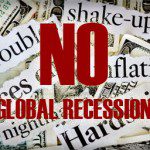The Baltic Dry Index is often looked at as a leading indicator of the global economy as higher shipping rates indicate stronger demand for shipping and healthier global trade. Year to date, the index is up 234% and is now at its highest level in more than three years. This would indicate that the global economy is picking up steam.
stronger demand for shipping and healthier global trade. Year to date, the index is up 234% and is now at its highest level in more than three years. This would indicate that the global economy is picking up steam.
So say edited excerpts from the introduction to an article entitled Baltic Dry Index Surges to Three Year High posted by the team at bespokeinvest.com.
[The following is presented by Lorimer Wilson, editor of www.munKNEE.com and the FREE Market Intelligence Report newsletter (sample here). The excerpts may have been edited ([ ]), abridged (…) and/or reformatted (some sub-titles and bold/italics emphases) for the sake of clarity and brevity to ensure a fast and easy read. This paragraph must be included in any article re-posting to avoid copyright infringement.]
The article goes on to say in further edited excerpts to ensure you a fast and easy read:
The chart below shows historical readings in the Baltic Dry Index going back to 2007. While the index is still well off its highs from 2007 and 2008, 2013 has been a great year for shipping rates.

[Editor’s Note: The author’s views and conclusions in the above article are unaltered and no personal comments have been included to maintain the integrity of the original post. Furthermore, the views, conclusions and any recommendations offered in this article are not to be construed as an endorsement of such by the editor.]
*http://www.bespokeinvest.com/thinkbig/2013/12/12/baltic-dry-index-surges-to-three-year-high.html (This work is licensed under a Creative Commons Attribution-NonCommercial-NoDerivs 3.0 Unported License.)
Related Articles:
1. The Baltic Dry Index: Why You Should Use It and How to Do So
The Baltic Dry Index is, in my opinion, the best leading economic indicator to follow when the media is telling us the economy is looking great one week and then predicting a double dip recession the next. Let me explain. Words: 933 Read More »
Previous Articles on the Performance of the Baltic Dry Index
1. Why Did the Baltic Dry Index Collapse? Here’s Why
The Baltic Dry Index is generally viewed as a leading indicator of global economic activity as dry bulk primarily consists of commodities such as building materials, coal, metallic ores and grain. My research, however, indicates that global manufacturing demand has very little to do with it but, rather, Chinese manufacturing demand – but not the actual level of manufacturing as measured by the CFLP Manufacturing PMI. [Let me explain.] Read More »
2. Abandon Ship! Baltic Dry Index on the Rocks of a European Recession
There has been an alarming development for the obscure, yet instructive Baltic Dry Index…[which] tracks the cost of shipping major raw materials (iron ore, coal, grain, cement, copper, sand and gravel, fertilizer and even plastic granules)…It is down 48.4% in the last month…[and] down 54.4% in the last three months. [Let me explain why and how to invest accordingly.] Words: 200 Read More »
The Baltic Dry Index is often cited by economists as a bellwether of global economic activity. The index, which measures the price of transporting raw materials by sea, has now risen by more than 21% from its recent lows and is also up 16% in the last week alone …calling into question the advent of a global recession. [Let us explain.] Words: 292 Read More »
 munKNEE.com Your Key to Making Money
munKNEE.com Your Key to Making Money





Remember that old joke where kids would challenge their friends, to hold the tip of their tongue and say,”My father works in a ship yard”?
Transportation may be up, but the important questions are:
1. What types of goods are being transported?
2. Where are the goods being transported to?
3. Are the return voyages carrying goods or just water ballast?
4. Are vessels getting larger so as to have to make fewer voyages?
5. Are new vessels being built, which wold indicate future needs?
An improvement in the global economy, would to me, indicate additional trade between many countries, not just a few countries transporting foreign goods to themselves!
As an example, if China used all available shipping to move raw materials and goods to China, I would not see that as improving the global economy; in fact it would do the exact opposite, it would hurt the global economy!